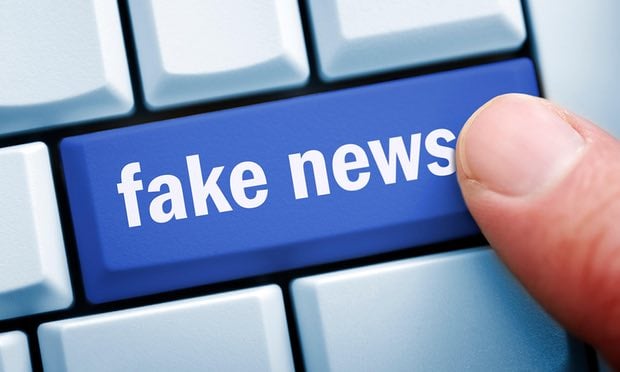The president’s tumultuous first weeks in office could influence uptick in viral sharing of misleading articles and propaganda that stoke progressive anxieties

While stories of police violence at Standing Rock have become commonplace, the account that spread last week was particularly shocking. An article from AlternativeMediaSyndicate.com said officers had burned the camps of indigenous activists fighting the Dakota Access pipeline – and destroyed their tipis.
The piece, which included an image of multiple large tipis engulfed in flames, was shared more than 270,000 times on Facebook. But the photo was from a 2007 HBO film, and a key premise of the story was fake.
“It’s absolutely frustrating,” said Dallas Goldtooth, an indigenous leader at Standing Rock who warned his followers on Facebook that the article was false. “There is so much misinformation.”
The 2016 presidential election led to international debates about filter bubbles and the spread of misinformation, with many analyzing how the proliferation of fabricated content may have helped Donald Trump and hurt Hillary Clinton.But Trump’s chaotic first weeks in office – filled with a steady stream of astonishing news developments that have rattled progressives – has laid the groundwork for what could be a significant uptick in fake news, misleading articles and propaganda with a distinctly liberal bent.
“Whoever is in power is going to be the target [of fake news],” said Eugene Kiely, director of FactCheck.org, which is partnering with Facebook to help identify false news stories.
Research has suggested that there was a huge volume of fake news across the political spectrum during the election, but that pro-Trump false stories were much more widespread than pro-Clinton ones. Some of the most high-profile examples, such as the conspiracy theory that Clinton was tied to a child sex ring, fed rightwing narratives.
Media and communications experts suspect those dynamics could shift under Trump. In an interview with the Atlantic, Brooke Binkowski, managing editor of the fact-checking site Snopes, said she had seen a spike in the amount and popularity of fake news directed toward liberal audiences.
On the left, there are numerous styles of misinformation that appear to be gaining traction. In addition to blatantly fabricated stories, there have been increasing concerns about articles featuring deceitful and hyperbolic headlines, viral memes that have a very tenuous connection to the truth and poorly sourced articles that use inaccurate visuals to draw readers.
At Standing Rock, for example, progressive sites have published random photos of massive buffalo herds suggesting they were at the demonstrations. One Facebook page posted footage of Trump talking to tech leaders in a highly misleading video about tribal leaders meeting with the president’s transition team.
A recent countercurrentnews.com article falsely declared: “State Gives Cops the Green Light To Shoot DAPL Protesters On Sight”.
In the case of the fake tipi-burning story, Linda Black Elk, who was present during last week’s confrontation with law enforcement, told the Guardian that police had forced them out of their camps, but that no tipis had been torched or destroyed.
In an email, a writer with Alternative Media Syndicate defended the post, saying the photo was a “stock image” meant to “draw a connection” to the HBO film and that the site removed it once there was confusion.
Goldtooth said it had been a constant struggle to stop the spread of false news about Standing Rock. “Folks feel like they need to sensationalize something to get attention and get awareness. You don’t need to do that. Tell the story as it is.”
Other recent fake or misleading stories catering to progressive audiences include a LearnProgress.org piece that falsely said Melania Trump was selling jewelry on the White House website; a viral story about a boy handcuffed at an airport due to Trump’s immigration ban, which used a photo from 2015; and a Politicot.com story with a fabricated Mike Pence quote about abortion and rape.
Progressives have also widely shared tweets from a number of accounts claiming to be rogue government officials speaking out against Trump, even though there’s no evidence that they are run by public servants.
Liberal anxieties about Trump have created an appetite for false news, and social psychology dictates that fearful people may be more gullible, said Claire Wardle, research director with First Draft News.
“It’s unsurprising to me that we’re seeing a growth of disinformation on the left … People want information that makes them feel better,” she said. “We’re living in a time where there is so much fear and concern mapped onto social technology.”
By Sam Levin, The Guardian





